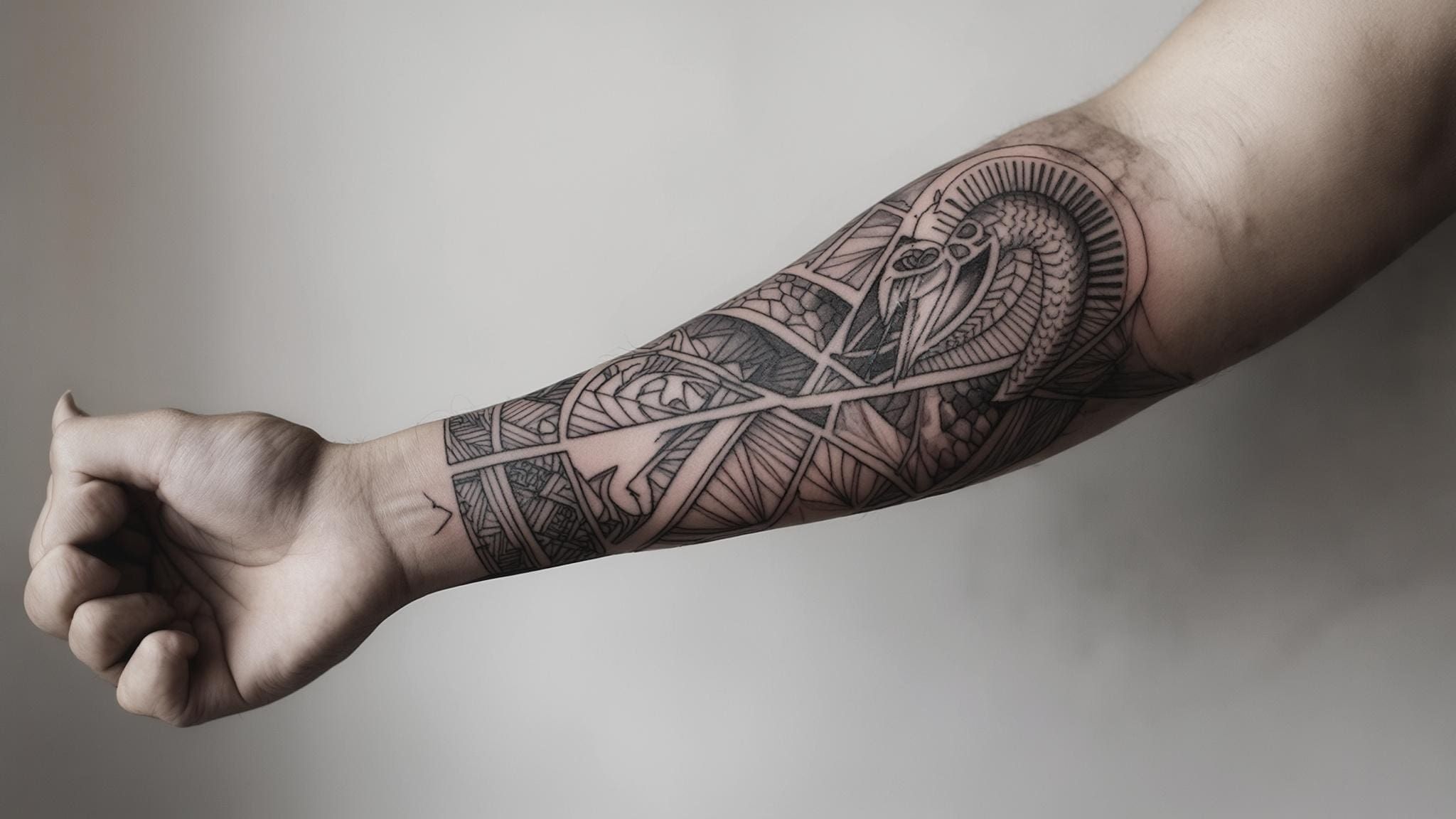How Much Do Shoulder Tattoos Cost? The Complete Price Breakdown Guide
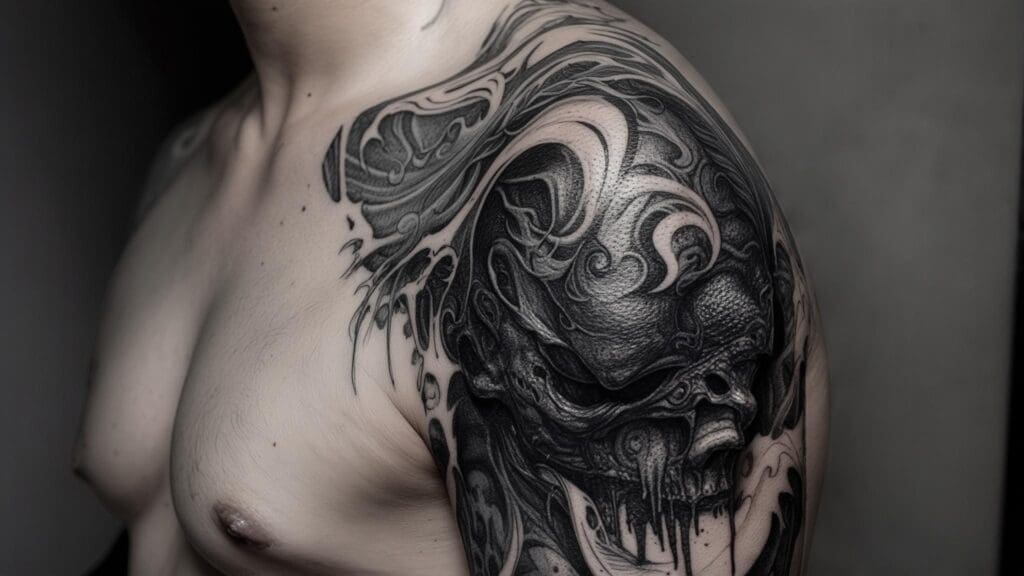
This comprehensive guide explores the multifaceted economics of shoulder tattoos beyond simple price tags. We’ll examine the factors that influence pricing, from artist expertise to design complexity, while providing concrete numbers to help you budget effectively. Understanding these elements will empower you to make informed decisions about your shoulder tattoo investment.
According to industry research, shoulder tattoos typically range from $200 to $500, depending on how much of the shoulder the design covers. Larger, more elaborate shoulder tattoos that extend onto the upper arm or back will naturally cost more.
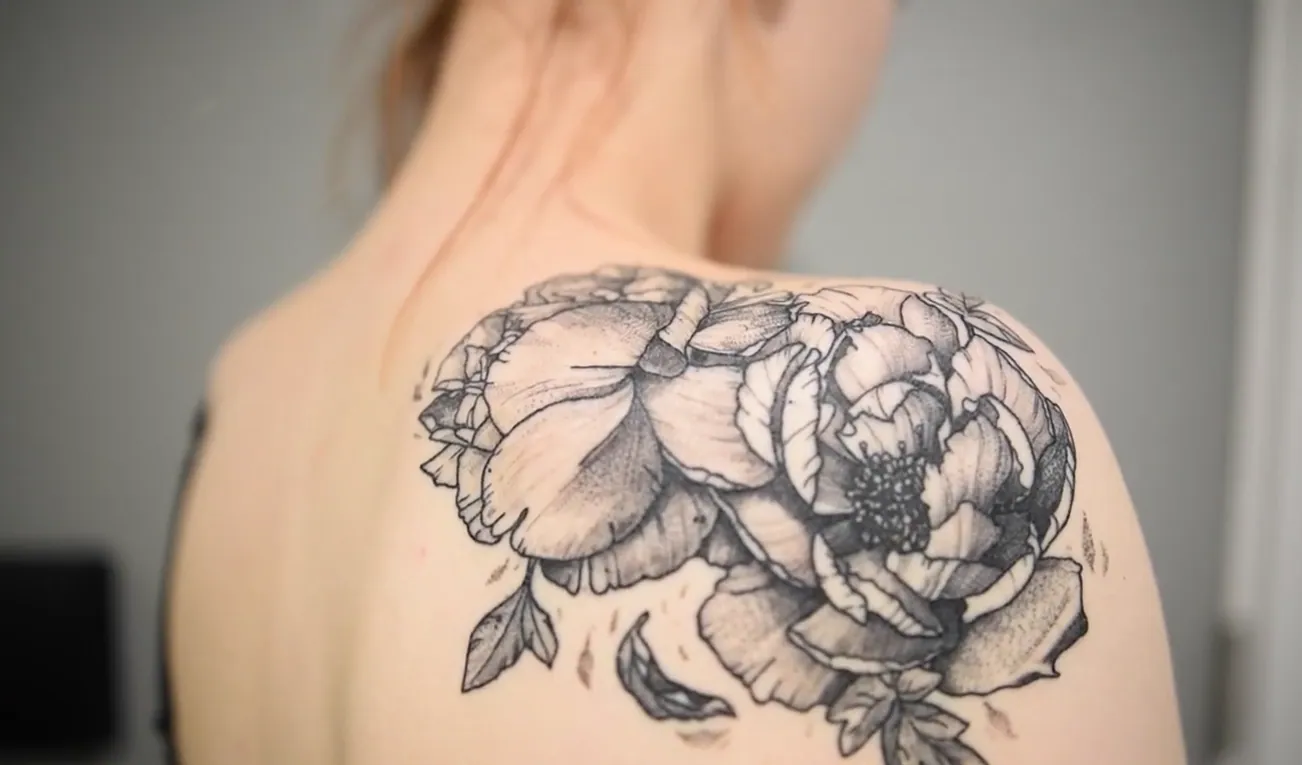
Table of Contents
- The Anatomy of Shoulder Tattoo Pricing
- The Hidden Economics of Shoulder Tattoo Investment
- Regional Market Variations in Shoulder Tattoo Pricing
- The Style-Specific Economics of Shoulder Art
- Time Investment as a Hidden Cost Factor
- Comparative Value Assessment Across Body Locations
- Small Shoulder Tattoo Economics
- Full Sleeve Integration Considerations
The Anatomy of Shoulder Tattoo Pricing
Understanding how much shoulder tattoos cost requires looking at several factors beyond just the dollar amount. I’ve been in countless tattoo shops where clients are shocked at price quotes because they don’t realize what goes into shoulder work.
The shoulder’s unique contours create specific pricing challenges that many first-timers don’t anticipate. Your shoulder isn’t a flat canvas – it’s rounded, muscular, and moves a lot. This makes it technically harder to tattoo than flatter areas.
Artist expertise and design size directly impact what you’ll pay. I’ve seen identical designs vary by hundreds of dollars simply based on who’s holding the machine. The tattoo cost structure follows complex patterns influenced by these anatomical considerations and technical difficulty.
Prices typically range from $200 for small, simple designs to $3,000+ for detailed full-shoulder coverage. The average tattoo cost is higher for shoulders than many other body parts because the curved surface requires specialized techniques that often command premium rates.
Artist Expertise Premium Factors
The relationship between an artist’s skill level and pricing isn’t straightforward when it comes to shoulder work. I’ve watched artists with specialized shoulder experience command significantly higher rates – and for good reason.
Artists specializing in shoulder work typically charge 15-30% more than general tattoo artists. We’re talking about $150-250 per hour versus $100-175 for less specialized artists. This premium reflects their ability to create designs that flow naturally with shoulder musculature and maintain visual integrity from multiple angles.
The tattoo pricing structure makes more sense when you understand what you’re paying for. I’ve seen too many people go for cheaper options only to be disappointed when their design looks distorted when they move their arm.
Dallas Cowboys quarterback Dak Prescott’s extensive tattoo collection includes a significant lion tattoo on his shoulder that was drawn by his late mother, Peggy. This personal connection highlights how meaningful shoulder placement can be for visibility and sentiment, justifying the premium many clients are willing to pay for quality shoulder work.
The average tattoo pricing varies widely based on artist reputation. I’ve found that researching portfolios thoroughly before committing saves both money and regret in the long run.
Specialized Shoulder Technique Valuation
Artists who excel in working with shoulder anatomy command premium rates for good reason. Their expertise in handling the rounded contours and creating designs that flow with muscle structure justifies higher pricing.
When budgeting, expect to pay 15-30% more for artists with proven shoulder-specific expertise. I’ve paid this premium myself and can tell you it’s worth every penny. These artists demonstrate mastery of working with curved surfaces while maintaining design integrity.
When considering specialized techniques for shoulder tattoos, you might want to explore different styles like those featured in our guide to bold men’s shoulder tattoo ideas to better understand the artistry involved in creating impactful designs.
Their techniques account for how the design will appear when the arm is in different positions. This specialized knowledge typically adds $50-75 per hour to standard rates but results in superior long-term results.
I remember talking to Marcus who wanted a detailed geometric mandala on his shoulder but initially balked at the $1,200 quote from a shoulder specialist (compared to $800 from a general tattoo artist). After seeing both artists’ portfolios, he noticed how the specialist’s shoulder work maintained perfect symmetry despite the curved surface, while the generalist’s designs often appeared distorted when the arm was in different positions. Marcus ultimately chose the specialist and reported that three years later, his design still looks precisely as intended, with clean lines and proper flow with his muscle structure—an outcome worth the 50% premium.
Portfolio Depth Assessment
When evaluating potential artists for your shoulder piece, carefully examine their shoulder-specific portfolio. I’ve learned this lesson the hard way – an artist might be amazing at forearm work but struggle with shoulders.
Artists with extensive shoulder experience (10+ pieces) have refined their techniques for this area, justifying their higher rates between $150-$250 per hour compared to $100-$175 for less specialized artists.
Experienced shoulder tattoo artists typically display consistent line work across curved surfaces in their portfolios. Their work shows proper placement that complements shoulder anatomy rather than fighting against it.
Portfolio depth indicates not just artistic skill but specific understanding of how designs age and wear on shoulder skin. I’ve seen beautiful fresh tattoos that aged poorly because the artist didn’t understand how shoulder skin moves and stretches over time.
| Artist Experience Level | Hourly Rate | Shoulder-Specific Premium | Portfolio Indicators |
|---|---|---|---|
| Apprentice/New Artist | $80-120 | None or minimal | Few shoulder pieces, simpler designs |
| General Tattoo Artist | $100-175 | None | Some shoulder work, variable results |
| Shoulder-Experienced | $150-200 | 15-20% | 5-10 shoulder pieces, consistent quality |
| Shoulder Specialist | $200-250+ | 25-30% | 10+ shoulder pieces, advanced techniques |
Size-to-Cost Relationship Decoded
The shoulder’s canvas creates a unique pricing structure where cost doesn’t increase proportionally with size. I’ve noticed that larger pieces often offer better value per square inch, which surprises many first-timers.
Designs that cross anatomical boundaries into adjacent areas command premium pricing due to increased technical difficulty. Tattoo prices jump significantly when your design extends from your shoulder onto your chest or back.
Partial shoulder pieces (covering less than 50% of available area) typically range from $200-600. Full shoulder cap designs generally cost $700-2,000 depending on complexity and artist reputation.
The per-square-inch cost often decreases as coverage increases, creating better value for larger shoulder pieces. I’ve found this counterintuitive pricing structure holds true across most reputable studios.
The Partial vs. Full Coverage Equation
Partial shoulder pieces covering less than 50% of the available area typically range from $200-$600, while full shoulder caps can command $700-$2,000. I’ve been surprised by how much more economical full coverage can be on a per-square-inch basis.
Small shoulder pieces (under 3 inches) almost always trigger minimum charges regardless of simplicity. This means you might pay the same for a tiny simple design as you would for something slightly larger and more detailed.
Medium coverage (30-50% of shoulder) typically costs $400-800 depending on detail level. Full shoulder coverage offers the best value per square inch despite higher total cost, often saving 20-30% compared to multiple smaller pieces.
According to tattoo pricing research, medium-sized shoulder tattoos (4-6 inches) typically cost between $500 and $1,000, while large shoulder pieces (6+ inches) range from $1,000 to $1,700+. This confirms the sliding scale where larger pieces often provide better value per square inch despite the higher total investment.
Edge Complexity Pricing
Designs that extend beyond natural shoulder boundaries into adjacent areas (collar bone, upper arm, or back) typically incur a 10-25% premium. I’ve seen this additional cost surprise many clients who don’t understand why crossing from shoulder to chest costs more.
Cross-boundary designs require advanced understanding of how different body areas move in relation to each other. Artists must account for how lines and shading will appear when crossing from flat to curved surfaces.
This complexity typically adds $100-300 to total project cost but creates more visually integrated results. I’ve found the extra investment worthwhile when creating designs that flow naturally across multiple body areas.
The Hidden Economics of Shoulder Tattoo Investment
Viewing shoulder tattoos through an investment lens reveals financial dimensions beyond the initial price. I’ve had my shoulder piece for over a decade now, and the long-term considerations have proven just as important as the initial tattoo cost.
Shoulder tattoos represent both immediate costs and long-term financial commitments. The shoulder’s visibility creates unique value propositions affecting both initial pricing and satisfaction.
Maintenance costs over time can add 30-50% to the lifetime investment of a shoulder tattoo. How much do tattoos cost over their lifetime? Far more than the initial price tag, especially for exposed areas like shoulders.
I’ve spent nearly as much maintaining my shoulder piece over the years as I did getting it initially. Between touch-ups, specialized sunscreen, and protective clothing, the costs add up.
Visibility ROI Calculations
The shoulder’s high visibility creates unique economic value that affects both initial pricing and long-term satisfaction. I love that I can display or conceal my shoulder artwork based on clothing choices – this practical versatility justifies the higher initial investment for many of us.
When calculating the return on investment for your shoulder tattoo, consider how much pain you’re willing to endure as part of the cost. Our tattoo pain level chart provides valuable insights into why shoulder areas might hurt less than other body locations, potentially making them worth the investment.
Shoulder tattoos provide variable exposure depending on climate and clothing choices. In warm-weather regions, clients may display shoulder art 60-80% of the year.
The shoulder’s concealability in professional settings creates dual economic value—visible when desired, hidden when necessary. I’ve found this particularly valuable throughout my career, as I can keep my tattoo covered during important meetings but show it off during social events.
Seasonal Exposure Value Assessment
Shoulder tattoos provide variable exposure depending on climate and clothing choices. In warm-weather regions, I display my shoulder art about 70% of the year, creating a lower “cost per view” than less visible tattoos.
This practical visibility factor often justifies a 15-30% higher investment for quality work. Shoulder visibility varies significantly by season, with summer months providing 3-4 times more exposure opportunities.
This seasonal visibility pattern affects perceived value, particularly for detailed work meant to be seen. Many clients report higher satisfaction with shoulder placement due to control over when and how the tattoo is displayed.
I’ve found that my shoulder piece gives me the most flexibility of all my tattoos – I can show it off at the beach but keep it professional at work with minimal effort.
Professional Environment Considerations
The shoulder’s concealability in professional settings creates dual economic value—visible when desired, hidden when necessary. This versatility factor typically adds a 10-20% premium for sophisticated designs that function well in both exposed and partially-visible contexts.
Standard business attire completely conceals shoulder tattoos, making them ideal for conservative workplaces. The ability to reveal artwork selectively creates higher perceived value for many professionals.
Designs that look complete when partially visible through various necklines command 15-25% higher prices. I’ve paid extra for a design that looks intentional whether fully visible or just peeking out from under a shirt sleeve.
Former Spice Girl Geri Halliwell-Horner reportedly spent £1,500 (approximately $1,900) to remove her star tattoo from between her shoulder blades in the early 2000s, highlighting the importance of considering long-term commitment when investing in shoulder art. As she explained at the time, “I have changed. It’s time to get rid of them and move on.”
Long-term Value Retention Strategies
The shoulder’s unique aging and exposure patterns create distinct economic considerations for maintaining tattoo value over time. I’ve learned that understanding potential maintenance costs and implementing preventative care can significantly impact the lifetime value of your shoulder artwork.
Shoulder tattoos typically experience 30-50% more sun exposure than torso work. This exposure accelerates color fading by 3-5 years compared to less exposed areas.
Budget $200-500 for touch-ups every 7-10 years to maintain visual quality. I’ve had two touch-ups on my decade-old shoulder piece, and they’ve been essential for keeping it looking fresh.
UV Exposure Depreciation Factors
Shoulder tattoos typically experience 30-50% more sun exposure than torso work, accelerating color fading by 3-5 years. I’ve seen dramatic differences between well-protected shoulder tattoos and those left exposed to the sun regularly.
Budget $200-$500 for touch-ups every 7-10 years to maintain visual quality, or select UV-resistant ink options that may add 15-25% to initial costs but extend maintenance intervals.
The shoulder’s position makes it particularly vulnerable to incidental sun exposure during daily activities. Black ink typically maintains integrity 30-40% longer than color work in shoulder placements.
Preventative measures like high-SPF sunscreen application can extend color vibrancy by 2-3 years. I apply SPF 50 to my shoulder tattoo religiously during summer months, and it’s paid off with minimal fading compared to friends with similar-aged work.
Regional Market Variations in Shoulder Tattoo Pricing
Shoulder tattoo costs fluctuate dramatically based on geographic location, local competition, and regional artistic trends. I’ve been shocked by price differences when traveling – the same design might cost twice as much in New York as it would in a smaller city.
Understanding these market variations helps you set realistic budget expectations and potentially find better value through strategic booking. Identical shoulder designs can vary in price by 30-60% based solely on geographic location.
Urban centers typically command premium rates but often provide access to specialized shoulder expertise. Tourist destinations frequently maintain dual pricing structures with higher rates for visitors.
How much are tattoos affected by location? Dramatically. I’ve found that researching prices across different studios and even different cities can reveal surprising value opportunities.
Urban vs. Rural Pricing Disparities
The urban-rural divide creates significant price variations for identical shoulder work, influenced by factors beyond simple cost-of-living differences. I’ve seen the same design quoted at $800 in Chicago and $500 in a suburban studio just 30 miles away.
Understanding these market dynamics helps you make informed decisions about where to get your tattoo and whether traveling for artwork makes financial sense.
Before deciding where to get your shoulder tattoo, review our complete tattoo pricing guide which breaks down how geographic location significantly impacts what you’ll pay for quality work in different markets.
Major tattoo destinations (NYC, LA, Miami) typically command 30-60% higher rates for shoulder work. Average hourly rates range from $200-350 in major cities compared to $120-200 in smaller markets.
This premium often includes access to artists with specialized shoulder expertise unavailable elsewhere. I’ve found that sometimes the higher city prices are justified by the specialized experience, while other times you’re simply paying for expensive studio rent.
Metropolitan Premium Analysis
Major tattoo destinations (NYC, LA, Miami) typically command 30-60% higher rates for shoulder work, with average hourly rates of $200-$350 compared to $120-$200 in smaller markets. I’ve paid these premium prices and sometimes found them worth it, sometimes not.
However, this premium often includes access to artists with specialized shoulder expertise unavailable in smaller markets. Higher overhead costs in urban studios directly impact pricing, with rent often adding $50-75 per hour to rates.
Competition in major markets tends to elevate quality standards, justifying portion of the premium. Urban artists typically have more shoulder-specific experience due to higher client volume and diversity.
The average tattoo price varies dramatically by location. I’ve found that researching artists outside major urban centers can sometimes reveal hidden talent at much more reasonable rates.
| Location Type | Hourly Rate Range | Shop Minimum | Specialized Shoulder Artist Availability | Wait Time for Quality Artists |
|---|---|---|---|---|
| Major Urban Centers (NYC, LA, Miami) | $200-350 | $150-200 | High (5+ specialists per city) | 2-6 months |
| Mid-Sized Cities | $150-250 | $100-150 | Medium (1-3 specialists per city) | 3-8 weeks |
| Small Cities/Suburbs | $120-200 | $80-120 | Low (may require travel) | 1-4 weeks |
| Rural Areas | $100-180 | $60-100 | Very Limited | Often immediate |
Tourism Influence on Local Pricing
Tourist-heavy regions often maintain a dual pricing structure—premium rates ($150-$300/hour) for visitors versus adjusted local rates ($100-$200/hour) for residents. I’ve experienced this “tourist tax” firsthand in places like Miami and New Orleans.
This typically adds 25-40% to shoulder tattoo costs for non-locals, particularly in destination cities known for specific tattoo styles. Tourist-oriented shops in vacation destinations often charge 25-40% more than local-focused studios.
Booking during off-peak tourism seasons can secure 15-25% discounts in vacation destinations. Some artists offer “locals only” rates that can save $50-100 per hour for residents with proof of address.
Portland, Oregon has emerged as a major tattoo destination with unique pricing structures. At Tattoo 34 PDX, a Black and Indigenous-owned shop in the Hawthorne District, shoulder work starts with a $100 minimum, but hourly rates vary by artist. Meanwhile, at Wonderland Tattoo, botanical shoulder specialists like Alice Kendall and Kirsten Holliday charge $200 per hour with books that only open four times annually due to high demand. This illustrates how regional specialization creates dramatic pricing and availability differences even within the same city.
Convention and Guest Artist Economics
Temporary artist availability creates unique pricing dynamics that significantly affect shoulder tattoo costs. I’ve both splurged on convention tattoos and saved by booking guest artists strategically.
Conventions and guest artist spots offer access to specialized talent but come with premium pricing and specific booking considerations that impact your total investment.
Tattoo conventions offer access to premier shoulder specialists at 15-30% premium over their studio rates. Typical convention shoulder pieces range from $800-3,000 depending on complexity.
Booking deposits for in-demand artists typically range from $100-300 and are non-refundable. I’ve lost deposits before when plans changed, so I now treat these as serious financial commitments.
Convention Pricing Structures
Tattoo conventions offer access to premier shoulder specialists at 15-30% premium over their studio rates, with typical convention shoulder pieces ranging from $800-$3,000 depending on complexity. This premium reflects the compressed timeframe and opportunity cost for traveling artists.
Convention artists typically charge flat rates rather than hourly fees due to time constraints. These rates average 20-35% higher than their standard studio pricing.
The premium reflects both travel expenses and the opportunity cost of working away from their home studio. I’ve found that despite the higher prices, conventions can be worth it for access to artists who might otherwise have closed books or live in different countries.
Booking Deposit Investment Strategy
Securing appointments with in-demand shoulder specialists typically requires non-refundable deposits of $100-$300, effectively increasing the total investment. I’ve learned to treat these deposits as serious commitments rather than casual reservations.
Strategic booking 3-6 months in advance can sometimes secure pre-increase rates before an artist’s annual price adjustments.
Deposits typically represent 20-30% of estimated total cost and are applied to final payment. Booking 3-6 months in advance often secures current rates before annual price increases (typically 5-15%).
Cancellation policies vary widely, with some artists requiring 2-4 weeks’ notice to refund deposits. I always clarify these policies before putting down money, as they can vary dramatically between artists.
The Style-Specific Economics of Shoulder Art
Different artistic styles create vastly different economic equations for shoulder tattoos. I’ve been surprised by how much style choice impacts price – sometimes more than size!
This section examines how technique requirements, time investments, and material costs vary dramatically based on your chosen aesthetic approach, helping you budget appropriately for your preferred style.
Style choice can impact shoulder tattoo pricing by 25-50% even for identical sized pieces. Technical requirements for different styles create significant time and material cost variations.
Emerging and specialized styles typically command premium pricing due to limited artist availability. How much does a tattoo cost when you choose a specialized style? Often significantly more than traditional approaches.
High-Detail vs. Bold Style Cost Comparison
The technical requirements of different styles create significant price variations for similar-sized shoulder pieces. I’ve paid nearly twice as much for fine-line work compared to traditional bold designs of the same size.
Understanding these differences helps you align your style preferences with your budget realities and make informed decisions about design complexity.
Highly detailed, fine-line shoulder work typically commands a 25-40% premium over bold traditional styles. Prices for detailed quarter-shoulder coverage range from $1,000-2,500.
This reflects increased time investment (often 2-3 additional hours) and higher risk of needing touch-ups. I’ve found that knowing these differences in advance helps set realistic expectations about what your budget can achieve.
Fine-Line Shoulder Economics
Highly detailed, fine-line shoulder work typically commands a 25-40% premium over bold traditional styles of the same size, with prices ranging from $1,000-$2,500 for detailed quarter-shoulder coverage. I’ve been shocked by these price differences when getting quotes for similar-sized pieces in different styles.
This reflects the increased time investment (often 2-3 additional hours) and higher risk of needing touch-ups.
If you’re considering a delicate fine-line design for your shoulder, you might find inspiration in our collection of small tattoo ideas that can be adapted to the shoulder’s contours while keeping costs manageable compared to larger, more complex designs.
Fine-line work requires specialized needles and techniques that add $50-100 to material costs. The shoulder’s curved surface makes fine-line work particularly challenging, requiring 30-50% more time.
Touch-up sessions are needed 20-30% more frequently for fine-line shoulder work compared to bold styles. I’ve had to budget for these additional touch-ups with my fine-line work, which wasn’t necessary with my traditional pieces.
Color Saturation Cost Factors
Full-color shoulder pieces with high saturation typically cost 30-50% more than black and gray work of equivalent size and detail, with prices ranging from $1,200-$3,000 for full shoulder coverage. This premium reflects both additional time requirements (typically 2-4 extra hours) and higher material costs for quality pigments.
Color work requires multiple passes to achieve saturation on shoulder skin, adding 2-4 hours to session time. Premium color pigments add $75-150 to material costs for full-shoulder pieces.
The shoulder’s varied skin thickness requires specialized color application techniques that increase time investment. I’ve found that color work on shoulders takes significantly longer than on flatter areas like my back or chest.
According to tattoo industry pricing data, the hourly rates for tattoo artists can vary significantly based on experience and demand, with average rates ranging from $100 to $250 per hour. For high-profile artists with large social media followings or those who tattoo celebrities, these rates can be substantially higher, directly impacting shoulder tattoo costs.
Emerging Style Premium Analysis
Cutting-edge and specialized tattoo styles create unique pricing ecosystems for shoulder work. I’ve noticed that watercolor, blackwork, and geometric designs each present distinct economic considerations due to their specialized technique requirements and limited artist availability.
Emerging styles typically command 20-35% higher rates due to limited artist availability. Specialized techniques require additional training and equipment that increases overhead costs.
These styles often require custom pigment formulations or needle configurations that add $50-150 to material costs. I’ve found that researching artists who specialize in your preferred style is essential for both quality results and understanding true costs.
Watercolor Technique Valuation
Watercolor shoulder pieces typically command a 20-35% premium over traditional work of similar size, with average costs between $900-$2,200. This reflects both the specialized skill requirement and the limited availability of artists who excel in this technically demanding style on curved shoulder surfaces.
Watercolor techniques require specialized color theory knowledge and blending skills. The shoulder’s varied contours make watercolor effects particularly challenging to execute consistently.
These pieces typically require 25-40% more time than traditional work of similar size. I’ve found that the extra investment for a skilled watercolor specialist is worth it – I’ve seen too many poorly executed watercolor pieces that look muddy after just a few years.
Blackwork and Geometric Pricing
Solid blackwork and geometric shoulder designs often present a counterintuitive pricing structure—despite using fewer colors, they typically cost only 10-15% less than full-color work due to the precision requirements and physical demands of creating consistent saturation across the shoulder’s varied contours.
Solid black saturation requires multiple passes and specialized techniques to achieve even coverage. Geometric precision on curved shoulder surfaces demands meticulous measurement and application.
These styles require 15-25% more black ink than traditional work, partially offsetting the savings from not using color. I’ve been surprised by how labor-intensive good blackwork can be, especially when creating perfect geometric patterns on the curved shoulder surface.
Time Investment as a Hidden Cost Factor
Beyond monetary expenses, shoulder tattoos require significant time commitments that represent a substantial economic investment often overlooked in basic price discussions. I’ve found that the time factor can be as important as the financial one, especially for larger pieces.
Understanding these temporal factors provides a more complete picture of the true cost of your shoulder artwork.
The physical and technical demands of shoulder work create unique session timing considerations. Multiple sessions are often required for larger pieces, adding to both explicit and implicit costs.
Healing intervals between sessions extend the total project timeline, creating additional opportunity costs. How much a tattoo cost in terms of time can be substantial – my full shoulder piece required three separate sessions spread over two months.
Session Duration Realities
The physical and technical demands of shoulder work create unique session timing considerations that directly impact both explicit and implicit costs. I’ve had to plan around these limitations for my own shoulder work.
Understanding these limitations helps you plan realistically for your shoulder tattoo project and budget for multiple sessions when necessary.
Shoulder sessions typically last 3-5 hours before diminishing returns set in due to pain response. Skin reactivity on shoulders often necessitates multiple appointments for larger pieces.
Multiple sessions add 10-20% to total costs through additional setup fees and minimum charges. I’ve found that breaking up sessions actually results in better quality work despite the higher total cost.
When planning his Japanese-style shoulder piece, Carlos initially budgeted $1,500 based on his artist’s $150 hourly rate and estimated 10-hour completion time. However, after consulting with the artist, he learned the project would require three separate 4-hour sessions ($1,800 total) due to the physical limitations of shoulder work. Additionally, each session required a $50 setup fee and two weeks of healing time between appointments, extending the project timeline to nearly two months. While the monetary cost increased by 20%, Carlos found the extended timeline created the bigger challenge, limiting his summer swimming plans and requiring careful clothing choices during the healing process.
Pain Threshold Economics
Shoulder sessions typically last 3-5 hours before diminishing returns set in due to pain response and skin reactivity. I’ve tried pushing beyond this limit and regretted it – both the artist and I noticed a decline in quality as my pain increased.
This physiological limitation often necessitates multiple appointments for larger pieces, adding 10-20% to total costs through additional setup fees and minimum charges across sessions.
Understanding your pain tolerance is crucial when budgeting for shoulder tattoos. Our ultimate tattoo pain scale for women provides insights into how shoulder pain compares to other body locations, helping you determine if you’ll need additional sessions that might increase your total cost.
The shoulder contains varying pain points, with areas over bone being particularly sensitive. Artist efficiency decreases by 20-30% after the 4-hour mark due to client discomfort.
Breaking large shoulder pieces into multiple sessions often results in better quality despite higher total cost. I’ve found the extra sessions worth it for the improved final result.
Healing Interval Financial Impact
Multiple-session shoulder pieces require 2-4 week healing intervals between appointments, extending the completion timeline to 2-3 months for full shoulder coverage. This extended timeline creates opportunity costs through prolonged periods with incomplete artwork and potential scheduling conflicts.
The shoulder’s movement patterns can extend healing time by 5-7 days compared to stationary body areas. Incomplete shoulder pieces may limit clothing options or social activities during the multi-month completion process.
Each healing interval requires $15-30 in aftercare products, adding to the total investment. I’ve had to budget not just for the tattoo itself but for quality aftercare products to ensure proper healing between sessions.
Aftercare Economic Considerations
Post-tattoo care for shoulder pieces presents distinct economic challenges due to clothing friction and movement patterns. I’ve found that proper aftercare is essential for shoulder work due to the constant movement and potential clothing irritation.
Understanding these requirements helps you budget for the full cost of your shoulder tattoo, including necessary aftercare products and potential lifestyle adjustments during healing.
Shoulder tattoos typically require $40-75 in aftercare products. This represents approximately 25% more than less mobile areas due to friction and exposure factors.
Specialized clothing or bandages ($15-30) are often needed to prevent friction during the critical 2-week healing window. I’ve had to invest in loose-fitting shirts and specialized bandages to protect my shoulder piece during healing.
Comparative Value Assessment Across Body Locations
Understanding how shoulder tattoo pricing compares to other body locations provides crucial context for evaluating the relative value proposition of shoulder artwork. I’ve found that shoulders offer unique advantages that often justify their higher price point.
This section examines cost-per-square-inch differences and the unique advantages of shoulder placement that may justify premium pricing.
Shoulder work typically commands $15-25 per square inch compared to $12-18 for forearm pieces. This 20-30% premium reflects the technical challenges of working on rounded surfaces.
Shoulder tattoos offer distinct advantages in terms of visibility control and aging characteristics. How much a tattoo costs varies dramatically by location, with shoulders sitting in the middle-to-upper range of the pricing spectrum.
Surface Area Value Comparison
The shoulder’s unique positioning creates distinct value metrics compared to similarly sized areas on different body parts. I’ve found that understanding these differences helps evaluate whether the premium pricing for shoulder work delivers proportional value for your specific needs and preferences.
Shoulder work commands a 20-30% premium per square inch compared to flatter body areas. This premium reflects both technical difficulty and the shoulder’s prime visibility characteristics.
Bilateral shoulder pieces rarely receive significant discounts despite being symmetrical designs. I’ve been quoted nearly full price for second shoulder pieces despite the design being identical to my first shoulder.
Cost-Per-Square-Inch Analysis
Shoulder work typically commands $15-$25 per square inch compared to $12-$18 for forearm pieces of equivalent complexity. This 20-30% premium reflects the technical challenges of working on rounded surfaces while maintaining design integrity from multiple viewing angles.
The per-square-inch cost decreases as shoulder piece size increases, creating better value for larger designs. Small shoulder pieces (under 3 inches) have the highest per-square-inch costs, often $40-60.
Medium to large shoulder pieces (5+ inches) typically cost $15-25 per square inch. I’ve found that going bigger often provides better value, though the total price tag is obviously higher.
Cross-Body Symmetry Considerations
Bilateral shoulder pieces (matching designs on both shoulders) rarely receive the traditional “buy one, get one half off” discount common for symmetrical work elsewhere on the body. I’ve been surprised by this when getting quotes for matching shoulder work.
Instead, expect only a 10-15% reduction on the second shoulder due to the unique challenges each side presents despite mirror-image designs.
Each shoulder presents unique anatomical challenges despite appearing symmetrical. Dominant vs. non-dominant shoulders have different muscle development affecting design application.
Artists typically spend 80-90% of the original time on the second shoulder, limiting discount potential. I’ve found this lack of significant discount frustrating but understandable once I watched the process.
Alternative Placement Financial Tradeoffs
Choosing shoulders over other locations creates distinct economic advantages and disadvantages worth considering before committing. I’ve found that understanding these tradeoffs helps determine whether shoulder placement offers the best value for your specific tattoo goals and lifestyle needs.
Shoulder tattoos typically maintain visual integrity 5-8 years longer than equivalent pieces on high-movement areas. This extended aesthetic lifespan represents a 20-30% better long-term value proposition.
Shoulders offer superior visibility control compared to areas like wrists or neck, creating practical value. I appreciate being able to show or hide my shoulder piece depending on the situation – something impossible with more visible placements.
Aging Process Value Retention
Shoulder tattoos typically maintain visual integrity 5-8 years longer than equivalent pieces on high-movement areas like wrists or fingers. This extended aesthetic lifespan represents a 20-30% better long-term value proposition despite the higher initial investment.
Shoulder skin maintains elasticity better than many other body areas, reducing distortion as you age. The shoulder’s limited fat fluctuation means designs remain more stable through weight changes.
UV exposure remains the primary aging factor for shoulder work, which can be controlled through protection. I’ve found that consistent sun protection has kept my shoulder piece looking fresh much longer than expected.
Small Shoulder Tattoo Economics
Small shoulder pieces present a distinct economic equation where minimum charges and setup costs create a different value proposition than larger works. I’ve found that tiny shoulder tattoos often don’t provide the best value per square inch, but they offer other advantages.
Understanding these factors helps you evaluate whether a small shoulder piece offers good value and how to maximize your investment.
Small shoulder tattoos almost invariably trigger studio minimum charges regardless of design simplicity. This creates an inverse economy of scale where tiny designs may cost $50-75 per square inch.
Strategic placement and design planning can significantly impact the value of small shoulder pieces. How much does a small tattoo cost on the shoulder? Usually between $80-150 minimum, regardless of how simple the design might be.
Minimum Charge Realities
The economics of small shoulder tattoos are heavily influenced by studio policies that create price floors regardless of design simplicity. I’ve seen clients shocked when quoted $100 for a tiny star or simple symbol.
Understanding these minimum charges helps you set realistic expectations for small shoulder piece pricing and evaluate whether you’re receiving fair value.
Small shoulder pieces (under 2 inches) almost invariably trigger studio minimum charges ranging from $80-150. This creates an inverse economy of scale where tiny designs cost significantly more per square inch.
Setup costs, including sterilization, equipment preparation, and stencil creation, remain constant regardless of size. I’ve found that understanding these fixed costs helps explain why even the simplest designs have minimum prices.
Shop Minimum Variations
Small shoulder pieces (under 2 inches) almost invariably trigger studio minimum charges ranging from $80-150, regardless of actual time required. This creates an inverse economy of scale where tiny designs may cost $50-75 per square inch versus $15-25 for larger works.
Studio minimums vary significantly by location, with urban shops charging $100-150 and rural studios $80-120. These minimums reflect fixed costs that remain constant regardless of design size.
Some studios offer “flash days” with reduced minimums ($60-90) for pre-drawn small designs. I’ve taken advantage of these special events to get small pieces at better rates than would normally be possible.
Placement Premium Factors
Small shoulder tattoos positioned in technically demanding locations (directly over the shoulder blade or acromion process) often incur a 15-30% placement premium despite their minimal size, reflecting the precision required to execute clean lines on these anatomically challenging surfaces.
Bony areas of the shoulder require specialized techniques to achieve clean, consistent lines. Small designs on curved surfaces demand greater precision than equivalent designs on flat areas.
This technical difficulty typically adds $20-40 to minimum charges for challenging shoulder placements. I’ve paid this premium for precise placement over my shoulder blade and found the extra cost worthwhile for the clean result.
Small Design Expansion Economics
The financial dynamics of adding to small shoulder pieces create unique economic considerations for collectors. I’ve found that planning for potential future expansion can save significant money long-term and provide better overall value for your tattoo investment.
Designing small shoulder pieces with future expansion potential can reduce lifetime tattoo expenditure by 20-40%. This approach eliminates potential cover-up costs ($350-800) or removal expenses ($1,200-3,000).
Forward-thinking design planning represents significant long-term savings despite potentially higher initial costs. I wish I’d considered this with my first small shoulder piece, which later required expensive modification to incorporate into a larger design.
Future Addition Planning
Designing small shoulder pieces with future expansion potential can reduce lifetime tattoo expenditure by 20-40% through elimination of cover-up costs ($350-800) or removal expenses ($1,200-3,000) when tattoo preferences evolve. This forward-thinking approach represents significant long-term savings despite potentially higher initial design costs.
Open-ended designs with natural expansion points typically add $50-100 to initial design costs. Discussing future possibilities with your artist can result in strategic placement that accommodates growth.
Leaving 1-2 inches of buffer space around small designs facilitates easier additions without reworking. I’ve seen friends save hundreds by planning their small shoulder pieces with future additions in mind.
Full Sleeve Integration Considerations
The shoulder’s role as a connector between upper arm and torso creates unique economic factors when considering full or half-sleeve extensions. I’ve found that strategic planning for potential sleeve expansion can save substantial money and create better overall design cohesion.
Shoulder design choices dramatically impact the financial efficiency of potential sleeve expansions. Strategic planning can save 30-50% on future integration work.
Developing artist relationships through shoulder work can yield significant savings on larger projects. How much do tattoos cost when expanding from shoulder to full sleeve? Typically $1,500-3,500 depending on complexity and coverage.
Shoulder-to-Sleeve Transition Planning
Strategic shoulder design choices dramatically impact the financial efficiency of potential sleeve expansions. I’ve seen friends spend hundreds extra trying to incorporate isolated shoulder pieces into sleeve designs later.
Planning for this possibility from the beginning can save substantial money and create better visual flow if you later decide to extend your shoulder piece into a half or full sleeve.
If you’re considering how a shoulder piece might eventually extend into a full sleeve, browse our jaw-dropping arm tattoo ideas for men for inspiration on designs that flow naturally from shoulder to forearm while maintaining visual cohesion.
Shoulder pieces created with sleeve extension potential typically add 15-25% to initial design costs. This preventative approach saves 30-50% on future integration work.
Strategic planning eliminates expensive reworking ($300-700) of shoulder elements to achieve visual flow. I’ve found this forward-thinking approach well worth the initial extra investment.
Design Continuity Economics
Shoulder pieces created with sleeve extension potential typically add 15-25% to initial design costs but save 30-50% on future integration work. This preventative approach eliminates expensive reworking ($300-700) of shoulder elements to achieve visual flow when expanding to a half or full sleeve.
Designs with natural flow points toward the upper arm facilitate seamless expansion. Color palette planning ensures consistent tones throughout potential sleeve development.
Background elements that can extend downward create natural transition opportunities. I’ve seen dramatic differences in sleeve expansion costs between friends who planned ahead and those who didn’t.
Artist Relationship Investment
Developing a relationship with an artist through a shoulder piece before committing to a full sleeve can yield 10-20% savings on the larger project through loyalty discounts, design efficiency, and elimination of multiple consultation fees. This relationship-building approach represents substantial savings on larger bodywork investments.
Many artists offer returning client discounts of 10-15% after establishing relationships through smaller work. Artist familiarity with your skin type and pain tolerance improves efficiency on larger projects.
Established relationships often provide priority booking access, reducing wait times for sleeve sessions. I’ve benefited from these relationship advantages with my own artist, saving both money and time on larger projects.
Collector’s Portfolio Strategy
Experienced collectors approach shoulder work with different economic strategies than first-time clients, often prioritizing different value factors. I’ve watched veteran collectors make decisions that seemed financially counterintuitive until I understood their long-term strategy.
Understanding these approaches can help you make more sophisticated decisions about your tattoo investments, whether you’re new to collecting or building an extensive portfolio.
Veteran collectors frequently use shoulder pieces as “gateway appointments” with sought-after artists. This strategic approach provides priority access for larger future projects.
Experienced collectors often value artist relationships over short-term price considerations. I’ve adopted some of these strategies myself as I’ve become more experienced with tattoo collecting.
Artist Access Investment
Veteran collectors frequently use shoulder pieces as “gateway appointments” with sought-after artists, willingly paying 20-30% premiums for small shoulder work to establish client relationships that provide priority access for larger future projects. This strategic overpayment represents a long-term investment in securing time with in-demand artists.
In-demand artists often have 6-12 month waiting lists for large projects but shorter waits for small pieces. Establishing yourself as a serious collector through shoulder work can provide access to artists’ “preferred client” lists.
This relationship often results in first access to cancellation slots and special project opportunities. I’ve seen friends use this strategy successfully to work with artists who otherwise had “closed books” for new clients.
Final Thoughts: Making Your Shoulder Tattoo Investment Count
Shoulder tattoos represent significant financial and time investments that deserve careful consideration. By understanding the complex factors that influence pricing, you can make informed decisions that maximize value and satisfaction. Remember that quality work from experienced artists typically provides better long-term value despite higher initial costs. Your shoulder tattoo is both a personal expression and a financial commitment—approach it with the thoughtfulness it deserves.
Quality shoulder tattoos represent significant investments ranging from $200 for small pieces to $3,000+ for detailed full coverage. Artist selection is the single most important factor in determining both initial quality and long-term value.
Proper aftercare and maintenance can extend the life of your investment by 5-10 years. How much do tattoos cost over their lifetime? The initial price is just the beginning – factor in touch-ups, aftercare, and potential modifications when budgeting.
Tattoo prices vary dramatically based on all the factors we’ve discussed. I’ve found that understanding these variables helps set realistic expectations and avoid sticker shock when getting quotes.
How Tattoo Generator IQ Can Help You Visualize Before You Commit
Before investing hundreds or thousands in a shoulder tattoo, Tattoo Generator IQ allows you to visualize professional-quality designs instantly. This powerful tool helps you explore multiple variations, adjust colors, and fine-tune details until your design perfectly matches your vision—all before spending on actual tattoo work. For shoulder pieces specifically, where placement and flow are critical factors affecting both aesthetics and cost, Tattoo Generator IQ provides placement guides that help you understand how a design will work with your unique anatomy.
Tattoo Generator IQ creates custom shoulder design visualizations in seconds rather than waiting weeks for artist sketches. The tool provides placement guides specific to shoulder anatomy to help you understand how designs will flow.
Using Tattoo Generator IQ before consulting artists can save $50-150 in design revision fees and consultation costs. I’ve used this tool myself to refine ideas before approaching artists, saving both time and money in the consultation process.
Ready to explore shoulder tattoo designs before committing to the investment? Try Tattoo Generator IQ today and see your vision come to life in seconds!
and nothing else
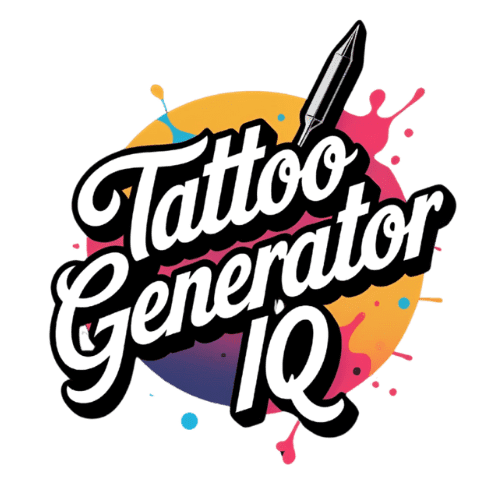



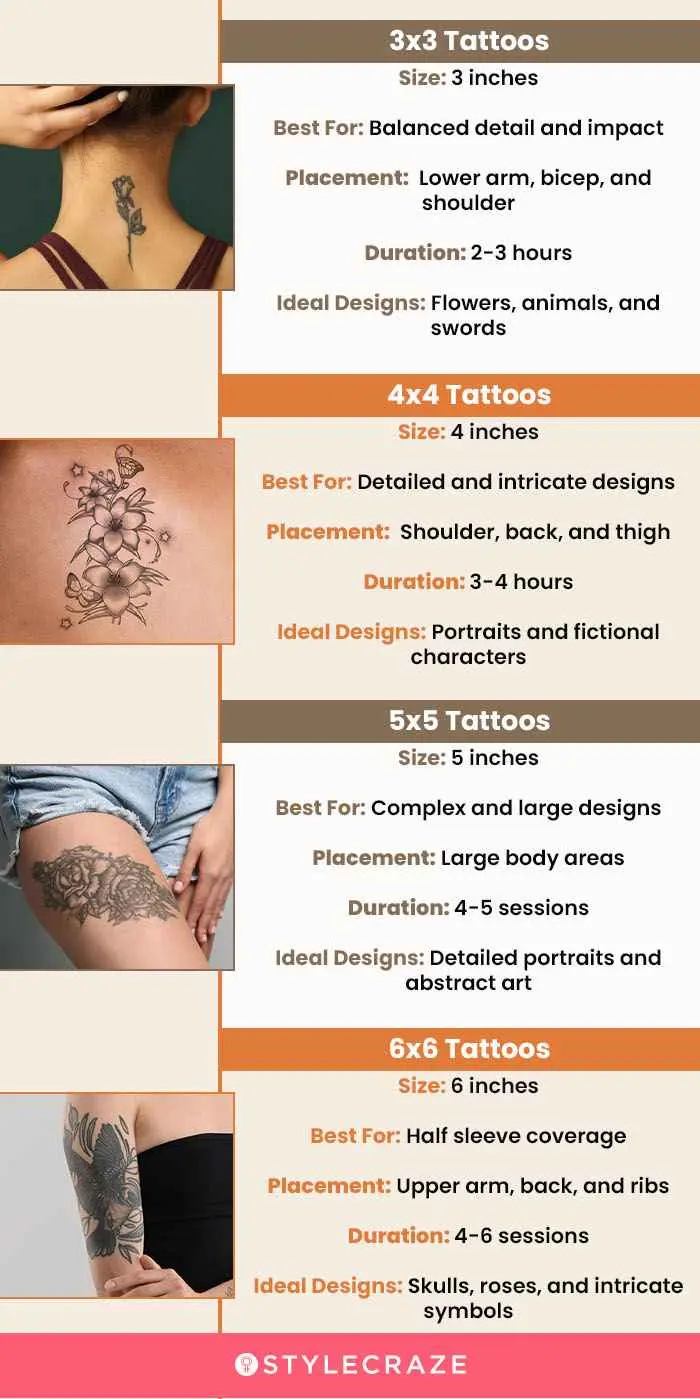





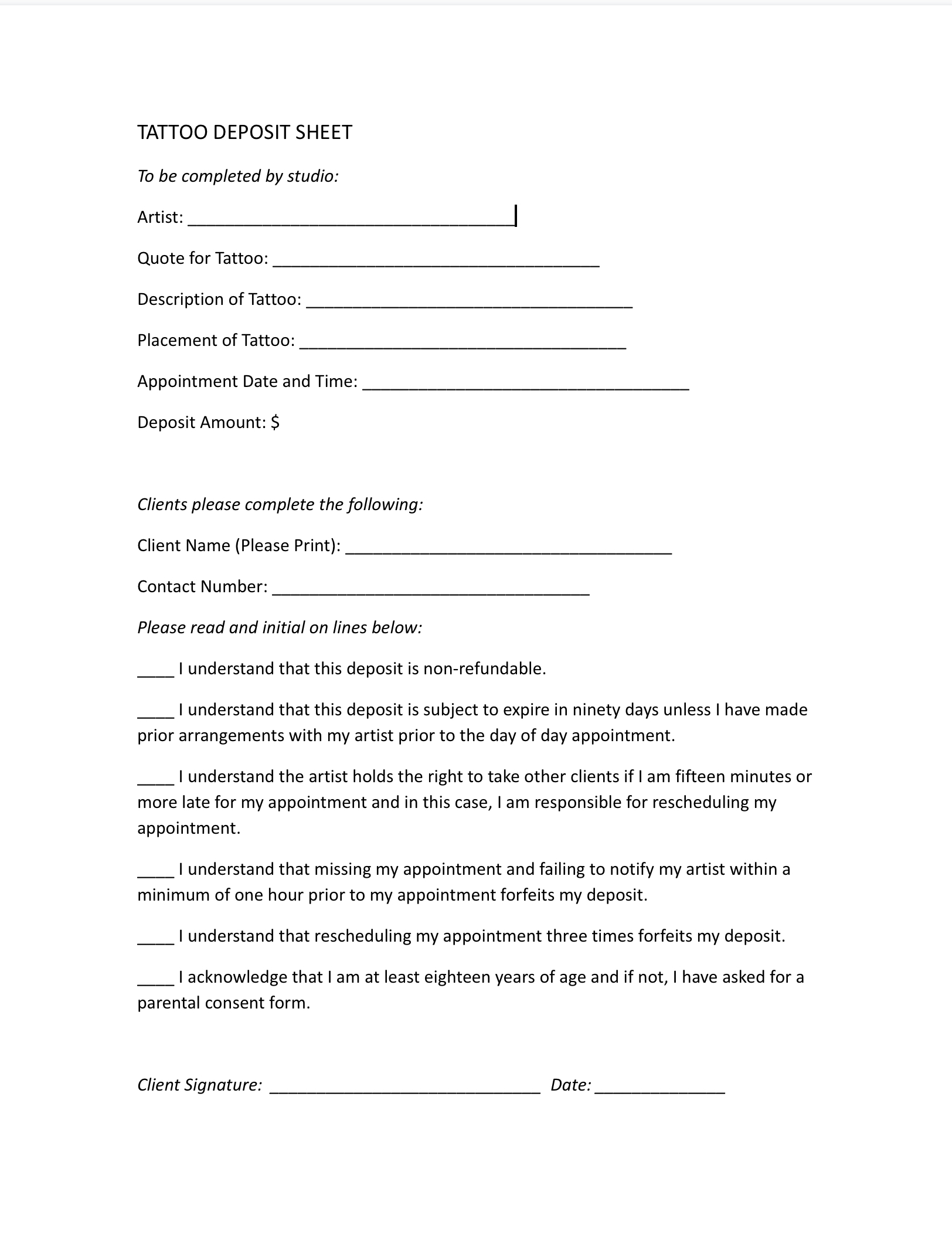
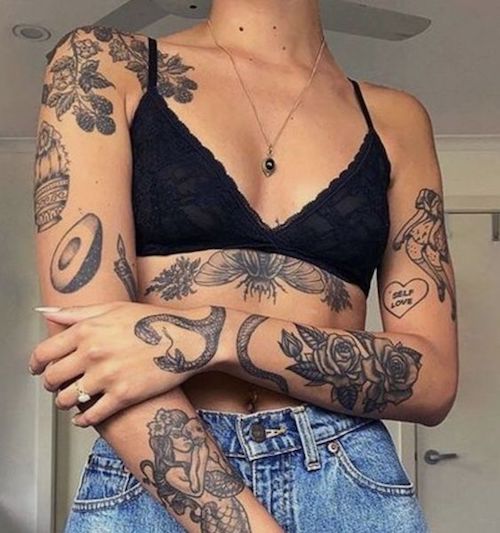



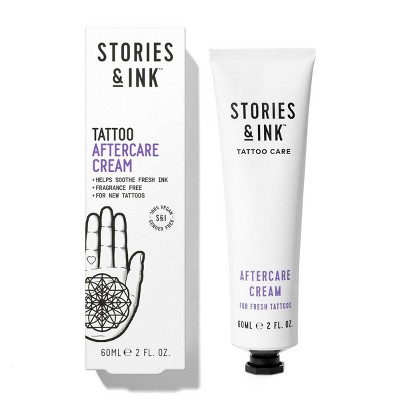



![OoT][BotW] Upper Arm Tattoo progression : r/zelda](https://preview.redd.it/oot-botw-upper-arm-tattoo-progression-v0-9xeoy25vrq2e1.jpeg?auto=webp&s=2b8fb8ecded51d6871415d8eb94578b5586678f3)

